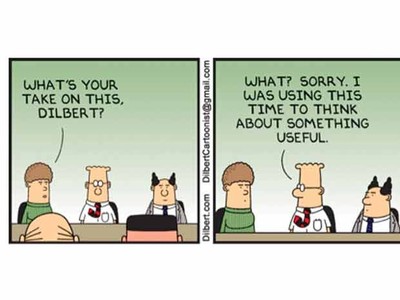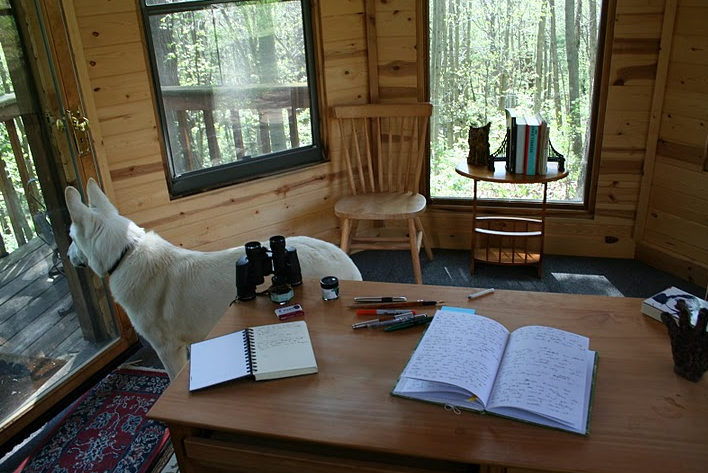Carl Newport, in his book Slow Productivity, elucidates a new way to think about knowledge work and accomplishment without burnout. He argues that much of what we do in the name of productivity, with respect to knowledge work, is actually pseudo productivity. In this post, I first describe pseudo productivity and then talk about what he describes as Slow Productivity.
Pseudo Productivity
Pseudo productivity is what we do in the name of productivity but doesn’t actually lead to meaningful work. The reason people fall into the trap of pseudo productivity is because knowledge work is hard to define. Some reasons why productivity in knowledge work context are hard to define are as follows.
- Other commitments come up quite frequently. Knowledge work is fluid and requirements and constraints change quite frequently.
- Lots of personal decision making is involved in the completion of an assignment. Personal judgements around assigning, collaborating and executing make it hard to apply resource management techniques across projects and people.
- Knowledge workers seek autonomy which makes supervision mostly a matter of guidance and not control.
All this makes it hard to measure productivity. This is why visible activities like showing up in meetings, staying up late in office, staying online on Slack or general busy-ness become proxies for productivity. These pseudo productivity metrics are also what organisations and managers often, directly or indirectly, use for rewarding people.
Slow Productivity
Slow productivity is a new way to organise knowledge work efforts to ensure a more sustainable and meaningful work life. It incorporates 3 main parts and aims to eliminate pseudo productivity.
Doing fewer things
Doing fewer things provides us with a meaningful space to do that which we want. It does not mean achieving less but engineering a kind of simplicity to reduce your workload creatively. Most knowledge work requires some amount of administrative overhead - email, meetings, etc. These take away time for your core work slowing down the rate of your real productivity. Doing fewer things not only saves you time but also improves the quality of the time spent on actual core work.

Here’s a few ways you can go about this.
- Restrict to working on one major project per day - the key to doing more is to separate the overhead from the actual work and if you do just one thing, you reduce the overheads.
- Autopilot scheduling - doing regular day to day stuff at specific schedules allows repetition of doing same tasks on same days at same times and reduces the cognitive load of administrating their overheads. You can also couple this schedule at the same location with a small ritual as rituals are powerful ways to get you in the zone.
- Avoid Task Engines - these are tasks that generate lots of small adhoc tasks that cannot be scheduled or planned. Instead schedule deep work that you can accomplish on your own without interruptions or collaborations.
- Get an Assistant - Pay money to handle your day to day administrative tasks by hiring an assistant to take over the overhead tasks and focus on your goals.
Work at a natural pace
Good things take time and its prudent to evaluate contributions over decades or lifetimes rather than a couple of weeks. There are psychological costs to slowing down. Its tempting to think of yourself as procrastinating and then as penance, drown yourself in work for weeks on end. Slowing down requires self forgiveness. Your ideal goal is to set up “days of quiet wonder”. Here’s a few ways to get you started.
Make a 5 year plan - planning at the small scale is necessary but also craft a 5 year plan. This long term plan can help you return to the things you deem important. It helps you tolerate extended interludes between your initiatives and frantic day to day work that can keep you very busy.
-
Make the next few months plan - complete projects or milestones from existing projects. not too ambitious and not too slack. strike the right balance to give yourself more than the needed time to achieve your goals.
-
Simplify your workday - one of the central joys of slowing down is that it frees you from needing to attack everything with frantic intensity. if you keep filling your every working day with work, then the previous two timelines don’t work. Cut your tasks list or estimates by 25-a 50% are a good way to ensure you don’t become too busy. Make it harder for people to do adhoc meetings or declare some hours to be always off limits.
-
Benefits of Seasonality - Taking time off regularly to recharge and gain some distance can help in becoming more productive over years. You can schedule “slow seasons” in which you knowingly don’t shoot for greatness for certain projects or time frames. You can also pair each major project with a rest project that rejuvenates you. this can be a leisure project at home or simply a less critical and more fun work project too. the key is to strike a proportional balance and set up a back and forth rhythm.
 Neil Gaiman’s writing shed
Neil Gaiman’s writing shed
- Getting outside the familiar settings - Working outside the familiar in eccentric writing places, as famous writers and creative artists have done for decades is a way to get out of the familiar. The familiar snares our attention destabilising the neural dance required to think clearly. Just looking at a laundry basket, can shift our mind from creative work mode to household chores context. Associative nature of our brain makes a mere sight of a laundry basket, prop up stress inducing neural load related to household tasks, says neuroscientist Daniel Levitan. Disconnection from the familiar is important and can happen in a cheap hotel lobby near your home or a fancy office 10 miles away.
Focus on quality
Hardwood takes time to grow. The folk singer Jewel’s life is a great example of how she prioritised her art over fame and rapid monetary growth. She rejected 1m signing bonus from record labels while being homeless, to ensure she remained cheap for the labels so they would have more patience and time as she explored different styles and found out what resonated best with the public.
When you concentrate your energy on producing your best possible result, a humane slowness becomes inevitable. Once you commit to doing something well, “busyness” becomes an impediment.
According to Ira Glass, in a creative career, there’s often a gap between taste and ability. Taste acts as the compass that guides you away from the valleys of mediocrity. It’s easier to recognise brilliance than producing it. Our taste is what propels us to the best work we are producing at the moment. The effort to diminish the difference between our taste and ability is where creative things happen. The first step to producing quality is to learn to appreciate good things.
Having your own peer network that helps you fine tune your own craft is a must. A group of similar practitioners will collectively have a higher bar for quality than you alone can. When you are performing for a group of people, your mind switches to a higher gear.
Investing in your tools also puts you in a mindset of producing quality work. For ex if you’re into podcasting, the difference between a 300$ mic and the built in mic of your laptop, could just push you in producing better content.
I run a startup called Harmonize. We are hiring and if you’re looking for an exciting startup journey, please write to jobs@harmonizehq.com. Apart from this blog, I tweet about startup life and practical wisdom in books.